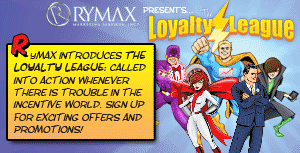Big Picture (Nov/Dec 2010)
By Bruce Bolger
Propelled recently by popular business books such as Dan Pink’s Drive, as well as the negativity publicity surrounding perceived excesses in the use of incentive programs following the Wall Street crash of 2008, the carrot is under assault.
While executives and managers in sales and marketing have generally felt comfortable with the use of incentives and promotions to achieve specific goals, the human resources community traditionally has held a more skeptical view, deriding the dangers of manipulating behavior and causing what is termed incentive program “addiction.”
If you look at the available research, both sides are right. The key to profiting from engagement is to foster a culture of performance, and that involves a variety of key elements, including leadership, training, rewards, recognition, contests and much more.
Despite evidence that engagement may be one of capitalism’s most overlooked disciplines in terms of its potential contribution to long-term performance – just look at Southwest Airlines as an example of a company that profits from engagement – it’s surprising how little empirical research exists on how to foster employee engagement. While numerous studies have been conducted on consumer motivation, there’s less in the way of longitudinal research clearly identifying all of the factors associated with employee motivation. Lots of people have their opinions, backed with evidence to prove the benefits of various leadership styles and ways to motivate, but more research is needed.
In the meantime, perhaps one of the best summaries of available research on the subject is the Incentive Research Foundation’s Incentives, Motivation and Workplace Performance. The study synthesizes a complete review of research that, while almost a decade old, contains a sensible, easily grasped laundry list of the key conditions necessary for motivation:
- Leadership – a clear vision of direction easily understood by the entire organization
- Training – a plan to make sure that people are capable of doing what is asked of them
- Communications – an ongoing, multi-media campaign to reinforce the vision and how people can contribute
- Task value – a program to make sure everyone feels that their work has meaning
- Support – an effort to create an atmosphere in which people feel valued for their contribution
- Emotion – a sense of fun in the workplace
- Measurement – a means of getting useful, actionable data.
In this context, noncash rewards, travel and recognition, as opposed to cash compensation, serve as intrinsic motivators that help reinforce communication, create a sense of task value, foster feelings of support and positive emotions. When organizations address all of these elements, instead of simply dangling carrots in front of people, they stand a far greater chance of creating a culture of performance – a far more durable platform for success than the traditional “do this, get that” approach.
Subscription Center
Subscribe to Engagement Strategies Magazine
Update Your Subscriptions



.jpg)


Comments
Show: Newest | Oldest
Post a Comment